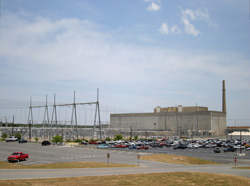
ABC News Blogs 14 November 2013, Florida Sinkhole Swallows Home
Six other homes have been evacuated as a precaution and Duke Energy has shut down power to the area.
A growing sinkhole in Florida has swallowed Continue reading

ABC News Blogs 14 November 2013, Florida Sinkhole Swallows Home
Six other homes have been evacuated as a precaution and Duke Energy has shut down power to the area.
A growing sinkhole in Florida has swallowed Continue reading
 The day after the VDT ran
Lowndes County’s admission that the sewer line break was theirs, not Valdosta’s,
did the VDT start a series of financial investigation
like they did about Valdosta’s water issues?
Nope, they ran a piece about how much weather costs the county,
with no recognition of watershed-wide issues,
nor of any need for the county to participate in proactively
dealing with them, to reduce costs, for better quality of life,
to attract the kinds of businesses we claim we want.
Nope, none of that.
The day after the VDT ran
Lowndes County’s admission that the sewer line break was theirs, not Valdosta’s,
did the VDT start a series of financial investigation
like they did about Valdosta’s water issues?
Nope, they ran a piece about how much weather costs the county,
with no recognition of watershed-wide issues,
nor of any need for the county to participate in proactively
dealing with them, to reduce costs, for better quality of life,
to attract the kinds of businesses we claim we want.
Nope, none of that.
Jason Schaefer wrote for the VDT 27 April 2013, What natural events cost Lowndes taxpayers,
In the Deep South, near a river plain where floodwaters rise and ebb from season to season and wetlands that distinguish the region from anywhere else in the nation, flooding makes a significant portion of the concern for Lowndes County emergency management.
OK, that’s close to getting at some of the basic issues. We’re all in the same watershed, and we need to act like it instead of every developer and every local government clearcutting and paving as if water didn’t run downhill. Does the story talk about that? After all, the county chairman attended the 11 April 2013 watershed-wide flooding meeting that led to the city of Valdosta’s likely participation in flodoplain planning. Nope; according to the VDT, everybody around here seems to be hapless victims of weather:
Continue reading
 After
Kendra Ulrich of Friends of the Earth asked
about some licensee documents related to last week’s
NRC hearing in faraway Maryland on restarting California’s
San Onofre nuclear reactor,
NRC’s
David Beaulieu expanded on NRC’s refusal to divulge the documents.
After
Kendra Ulrich of Friends of the Earth asked
about some licensee documents related to last week’s
NRC hearing in faraway Maryland on restarting California’s
San Onofre nuclear reactor,
NRC’s
David Beaulieu expanded on NRC’s refusal to divulge the documents.
Here’s the video:
Video by Myla Reson at NRC, Maryland, 18 December 2012.
 You can hear him say it’s “never been a practice” to let the public
see licensee documents. But if they’re being used in making a license
decision, why doesn’t that make them public documents accessible by the
public? Oh, right “it’s very complex” but “it’s a yes or no question”
and “I will assess”, he says. It’s good to be king!
You can hear him say it’s “never been a practice” to let the public
see licensee documents. But if they’re being used in making a license
decision, why doesn’t that make them public documents accessible by the
public? Oh, right “it’s very complex” but “it’s a yes or no question”
and “I will assess”, he says. It’s good to be king!
I wonder if the public had some assurance of transparency maybe the NRC wouldn’t get so many FOIA requests?
Remember, this is the same NRC that gave 100-mile-from-here same-design-as-Fukushima Plant Hatch a 20 year license extension, and the same NRC that gave Plant Vogtle a clean bill of health at a public meeting two days before Unit 1 shut down, and the same NRC that could stop the new nukes there even if the GA PSC won’t.
What if we deployed solar power instead, on budget and on time?
-jsq
 Did you know the U.S. Nuclear Regulatory Commission
doesn’t publish nuclear licensee documents?
Hear them say it on this video of Tuesday’s NRC “public meeting” in Maryland
about restarting the San Onofre reactor in California.
This is the same NRC
that gave Plant Vogtle a clean bill of health
at a public meeting two days before Unit 1 shut down,
and the same NRC that could stop the new nukes there
even if the GA PSC won’t.
Did you know the U.S. Nuclear Regulatory Commission
doesn’t publish nuclear licensee documents?
Hear them say it on this video of Tuesday’s NRC “public meeting” in Maryland
about restarting the San Onofre reactor in California.
This is the same NRC
that gave Plant Vogtle a clean bill of health
at a public meeting two days before Unit 1 shut down,
and the same NRC that could stop the new nukes there
even if the GA PSC won’t.
 This same NRC recertified Plant Hatch on the Altamaha in Georgia,
extending the original 40 year design lifespan
of Unit 1 from 2014 to 2034
and
of Unit 2 from 2018 to 2038.
But don’t worry; if you’re farther than 10 miles from
Hatch,
you’re outside the evacuation zone, so you must be safe, right?
Just study the licensing documents to see; oh, wait!
This same NRC recertified Plant Hatch on the Altamaha in Georgia,
extending the original 40 year design lifespan
of Unit 1 from 2014 to 2034
and
of Unit 2 from 2018 to 2038.
But don’t worry; if you’re farther than 10 miles from
Hatch,
you’re outside the evacuation zone, so you must be safe, right?
Just study the licensing documents to see; oh, wait!
Kendra Ulrich of Friends of the Earth asked the NRC some simple questions that stumped the Commissioners and staff. She wondered when the public could expect to see a a 50-59 analysis California Edison had done about restarting San Onofre. Dave Beaulieu, NRC Generic Communications Branch, said it was a “licensee document, licensee documents are not made public.” He did say NRC would release its own inspection results. She asked again, and Rick Daniel, NRC meeting facilitator suggested she submit written questions. Beauleiu summarized:
“At the end of the day, licensee documents are not made public; that’s the answer.”
So what would be the point of her submitting questions when she was just told they won’t make the answers public?
Ulrich continued by asking why NRC was considering going ahead on the basis of experimental data that has never been used before and that has not been made public. Remember this is about a nuclear reactor that was shut down because it was leaking. That question sure caused some passing of the buck and pretending not to understand the question by everybody in the room who should have been able to answer the question.
Here’s the video:
Video by Myla Reson, 18 December 2012, Maryland.
Continue reading“Prohibition didn’t work in the past, and it’s not working today”.
Franklin said LEAP now represents 50,000 members worldwide.
Few issues unite people across the political sprectrum like this one, from the NAACP to Grover Norquist.
We don’t need a private prison in Lowndes County to lock up more people. We need fewer people in prison so we can afford to educate people.
-jsq
Slightly cheaper. Which we already learned is by having fewer guards per prisoner. Risking public safety for small dollar savings: does that sound like a good idea to you?.Private companies can build prisons faster and operate them for slightly less than the state, said Michael Nail, deputy director of the department’s corrections division.
How much cheaper? Continue reading
 Here’s an interesting
video interview
with Dr. William Sammons,
the doctor who spoke in Traverse City just before that biomass plant was nixed.
Here’s an interesting
video interview
with Dr. William Sammons,
the doctor who spoke in Traverse City just before that biomass plant was nixed.
Is it more important to reach the target … or to say we have new information and we need to revise the targets and what qualifies?He’s talking about potential billions of dollars of health costs from particulates, about “waste” wood (what they say they will burn) vs. whole trees (what they end up burning), and most importantly about sustainability.
Biomass plants don’t have to report their CO2 emissions, so if all the proposed biomass plants get built we’re talking about as much as 800 million tons of CO2 from biomass plants by 2020, 12 to 14% of total CO2 emissions for the U.S. (not just power emissions: total national emissions). Trees don’t grow fast enough to suck all that back out of the air in ten years. Continue reading